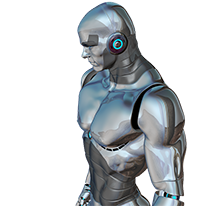Uploaded November 16, 2016
“Over the years, a number of science fiction films, television shows and novels have depicted a future where portions of our lives are replaced with robots and artificial intelligence. Everything from the factories to the storefronts is populated not by humans, but by cold, calculated examples of the finest that “modern technology” has to offer. According to one recent report from Forrester, however, this may not be too far from the truth: It is predicted that robots and AI will replace up to 7% of all jobs in the U.S. by as soon as 2025.
Though we probably don’t have to worry too much about a robot uprising (yet), to say that technology is already impacting nearly all areas of our lives is something of an understatement. In the accounting industry, where I’ve worked for more than 20 years, we’re already experiencing incredible leaps in tech; bots and cloud accounting solutions make it easier than ever for small business owners to manage their accounting and bookkeeping tasks with the efficiency that only their larger counterparts formerly enjoyed.
With these changes, there is a shift in the role accountants play in working with their business clients. This shift will accelerate as more businesses jump to the cloud. Many accountants are riding this wave and will thrive, but many others may suffer the same fate as the dinosaurs.
The Technology Learning Curve
This is predicated on the idea that entrepreneurs know how to use these new gadgets and tools in the first place. Anyone can blindly enter numbers into a software program; understanding what they mean is the key. Not everyone can be like one of the eccentric tech wizards from the HBO comedy “Silicon Valley.” Just because you know what the cloud is, does not mean you know how to leverage it to your full advantage.
At the end of the day, what the cloud accounting revolution really enables isn’t a future where accountants are out of a job, but a very real and valuable opportunity for accountants to help their business clients in ways that were not available even five years ago.”

